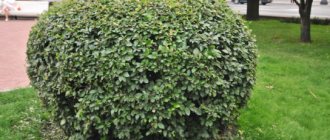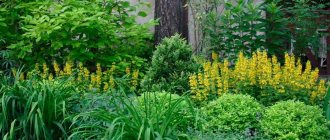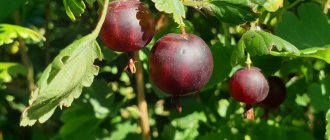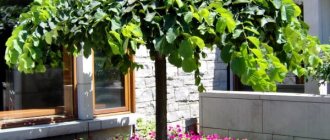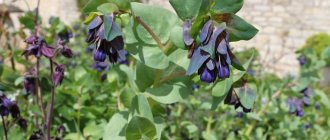0 15338
Shade-loving shrubs in the garden are those plants without which it is difficult to imagine a suburban area. It is they who have the responsibility to create harmony around them. Shade-loving ornamental plants for the garden can create mystery, or, on the contrary, they can add bright colors. Landscape designers love to create accents in flower beds with shade-loving garden plants. But not only professionals can highlight the necessary nuances in a flowerbed. Everyone can do this. In this article we will tell you how shade-tolerant trees and shrubs, as well as flowers, create the overall picture of an attractive site.
What plants grow in the shade
First you need to figure out whether all shade-tolerant ornamental plants for the garden can grow in full shade. In this article we will not be able to cover the entire list, but we will try to describe the most prominent representatives of plants for shady places.
No matter what demands perennial flowers and shrubs put on gardeners, everyone can still find their own hero.
At the same time, we hasten to assure you that plants with shade-tolerant properties can still delight you with their flowering. How to properly plant shade-loving plants and what shrubs can be planted in the shade - this will be discussed in the next section.
To begin with, it is worth saying that most perennials are shade-loving shrubs, which in nature are often found in forests.
Therefore, such crops can be content with a minimum of light without harm to themselves. But this does not mean that you can plant any plant on your site. First, decide which garden shrubs will feel comfortable in your climate. After that, decide on a place on your site.
There are practically no difficulties here - we plant sun-loving plants in a bright place, and shade-loving plants under the shade of buildings or tall trees. If you do not want to risk the brightness of the leaves or the splendor of flowering, then it is better to listen to this advice.
When choosing shade-loving perennials for the garden, take into account its overall picture. If you only have a couple of acres of land, then you should not decorate your territory with tall crops. Pay better attention to winter-hardy low-growing shrubs that can fit perfectly into your little cozy world.
A hedge can be formed from medium-sized shrubs that have a dense crown. These decorative bushes for the garden and dacha will attractively decorate your site. Juniper has been coping with this task for a long time and everywhere.
In addition to flowering shrubs, there are those that do not bloom as attractively as we would like, but at the same time they have such amazing foliage (color, shape) that this more than compensates for the weak flowering.
Shrubs are the best assistant in garden zoning. With their help, it is easy to determine where the recreation area begins and ends, and where the vegetable garden is.
In addition, shrubs help define a path or shade planted sun-loving flowers. And fast-growing fruit trees or fruit bushes will bring double benefits - a harvest of fruits and berries.
Just because shade-loving shrubs are a little indifferent to the sun doesn't mean they don't care what kind of soil they're planted in. On the contrary, we urge you to pay special attention to this point. A flower that grows in the shade in a country house or fruit trees growing in the shade of a garden love moist, but at the same time drained soil.
Plants growing in their natural environment are accustomed to moist soil. In areas with dry sandy soil, additional watering will need to be considered.
But don't overdo it. Most shade-loving plants have a thick root that grows not in depth, but in breadth, along the surface. Therefore, if you allow water to stagnate or do not think through drainage, their roots will rot. To avoid this, add pebbles or broken bricks to the bottom of the planting hole for drainage.
The soil should be nutritious, but light, like under deciduous trees in the forests. If the soil on your site is poor, then this is not a problem - enrich it with compost or humus. Don't forget about acidity.
Shade-tolerant flowers for the garden
There are many types of flowers that are not capricious, growing in the shade of the garden. On a hot summer day, you can enjoy not only the shade from the foliage of the trees, but also the blooming of your favorite flowers.
As the song says, “nature has no bad weather,” which means that the manifestations of weather conditions cannot harm anyone, but benefit others. Nature, created so wisely and sensitively, does not make mistakes. People make mistakes when they plant plants incorrectly. And even on the north side of the garden, shade-loving beautiful garden flowers can grow in the shade, you just need to choose the right species.
There are many types of shade-loving flowers for the garden. What flowers are the most famous in our area:
Oak anemone or anemone. Blooms as a signal that spring is approaching. Along with the first swelling buds, the anemone also blooms. It blooms until the end of May. Many gardeners use such delicate shade-loving flowers for their gardens.
Lily of the valley. This perennial May flower blooms in the midst of spring. Lilies of the valley grow short.
Astrantia is large. This flower has long been popular with gardeners who love astrantia for its amazingly beautiful inflorescence, which many mistake for flowering. It blooms in early July, but is famous not only for its flowering, but also for its leaves, which have a decorative shape.
Corydalis. Loves northern climates and blooms even under dense tree canopies. Blooms from April. It does not require any maintenance at all.
Dicentra. This plant is a decoration for any flower garden. The di variety blooms for 1.5 months, starting in May. The “Beautiful” variety blooms almost all summer.
Foxglove or digitalis. This flower has about 35 species, two of which are found in northern Russia and Western Siberia. This is a perennial plant that blooms all summer.
Geranium or cranebird. This perennial has only advantages: beautiful abundant flowering, low bush, multiplies quickly. Blooms profusely and for a long time.
Liverwort. It will delight you with abundant flowering if four conditions are met - shade, normal watering, moisture-absorbing soil, mulch.
Primroses. The variety of flowers and neat small bushes make primroses a welcome guest in every garden. They begin to bloom in April.
Annual flowers that do well in the shade include capuchin or nasturtium, lobelia and ornamental tobacco - to name a few.
And now we come to the most important and interesting thing - to the description of exactly which shade-tolerant shrubs can grow in Moscow, the Moscow region and other regions of Russia.
Overview of species
There are many perennials suitable for growing in shady gardens. Conventionally, they are divided into shrubs, as well as flowers and herbs. The former can have very different heights; most often they are planted in the form of a hedge, but even when planted alone they can look very impressive.
Flowers and herbs grow up to 15-45 cm and can be used both as a background planting and to create decorative accents in a garden composition.
Astilbe
This is a perennial shrub, which has about 400 varieties. Flowering begins in July and lasts 3-4 weeks. The flowers are collected in paniculate inflorescences; their shades can be very different, but most often gardeners choose varieties with white, purple, red and pink petals.
This crop tolerates shade well, but short-term drought and poor soil are dangerous for them, so astilbe needs regular watering (1-2 times a day depending on the weather) and fertilizing.
Volzhanka
A beautiful spreading shrub with a large number of white inflorescences. Flowering occurs in June-July. The height of the bush is 1.5-2 m. Volzhanka can grow in sunny areas and in the shade, but in the light it develops worse and does not bloom lushly.
The culture is unpretentious; it can grow in one place for up to 20 years, without requiring replanting or fertilizing.
Heuchera
The main advantage of this ornamental plant is its wide shade palette. Its leaves can be colored in a variety of shades - gray, cream, red, as well as purple, brown and white.
Gardeners highly value heuchera for its unpretentiousness - the bush looks spectacular from early spring until late autumn, and a pleasant bonus is its unpretentiousness, resistance to diseases and attacks of garden pests.
Hydrangea
Gardeners love shade-tolerant perennial hydrangeas for their beautiful and long-lasting blooms, which begin in late spring, last throughout the summer and end in late autumn. The garden plot where this crop grows invariably attracts the attention of those around with the size of the flowering balls, as well as the color range of the inflorescences (they can be white, beige, pink, red and even blue).
The shade of large-leaved hydrangea depends not only on its varietal characteristics - it can change depending on the presence of aluminum in the soil and the level of acidity of the substrate.
Garden hydrangeas reach a height of 1-3 m, liana-shaped ones grow up to 30 m. Depending on the variety, the plant can be deciduous or evergreen.
Japanese maple
This plant is a species of deciduous tree that is often grown and used in landscaping. The shrub is native to the Land of the Rising Sun, and can also be found in South Korea. Nowadays, breeders have developed many varieties of this crop, the height of which does not exceed 2 m.
Japanese maple is highly valued for its low growth rate and decorative appearance.
Its leaves remain rich green from mid-spring until late autumn, and in the fall they acquire dark red and purple-brown tints.
It is better to plant the plant in full shade, as with a lot of light, burns appear on its leaves.
Spirea
Spiraea are also unpretentious shrubs and at the same time very beautiful. It has many varieties that bloom in both spring and summer. Experienced gardeners plant spirea so that one species finishes flowering, and the second just begins - thus, the entire summer season will be able to observe flowering, and it blooms generously and thickly. In addition to flowering, spirea is valued for the decorativeness of its foliage. Spiraea is a slow-growing low shrub. Unpretentious when choosing soil for planting.
It is worth paying attention to what type of spirea you are planting, because different varieties relate to shade differently.
Jasmine
What is the first thing that comes to your mind when you mention jasmine - yes, an amazing aroma. In addition, this is one of the most beautiful shrubs in gardens throughout central Russia. Types and varieties of jasmine differ from each other in size, shape and color. For example, white-flowered jasmine is not afraid of frost and many diseases.
Looks good in a group with other shade-loving shrubs. The main “request” of jasmine is to water it well and correctly. Early species begin flowering in May, late ones in September.
Kalina
When we choose berry bushes for our garden, the first thing that comes to mind is viburnum or rose hips. Viburnum blooms with white inflorescences and bears fruit with bright red berries. A separate article can be written about their usefulness. Viburnum foliage can be lush green and even red. Viburnum has a couple of hundred species, among which there are even evergreens.
In our climate, gardeners grow frost-resistant perennial shrubs that begin to bloom from mid-May to late June for approximately 20 days.
Rose hip
Useful, beautiful, unpretentious - all these words describe one unique shrub. In addition to the fact that rosehip contains 50 times more vitamin C than lemon, it is also amazing for its decorative properties, as well as the fact that with its thorns it can create a natural fence around your site.
It blooms in pink and red (some lovers claim that it is no worse than a rose) starting in May and ending in August.
Lilac
Using these shrubs as an example, you can see that the lilac color has many shades. For many, lilac is like a lily of the valley among flowers - a symbol of the beginning of spring. Lilac cannot be called a low-growing shrub, because it reaches two to three meters in height. Lilacs look beautiful in a single copy, but planting lilacs is something amazing.
There are many varieties that are frost-resistant and easy to care for. Prefers partial shade and space.
Forsythia
Forsythia are ideal shrubs for the garden. Bright, juicy, early and long blooming. This sunshine can form a hedge on your site. Forsythia does not like waterlogging and drafts. Needs shelter for the winter.
Budleya David
These ornamental shrubs appeared in our garden relatively recently, but they managed to take their place there quite firmly. An amazing aroma comes from blue, purple, pink flower candles. The color of buddleia can delight us from mid-summer until almost mid-autumn. It resembles lilac, which is why it is called autumn lilac.
Buddleia is often planted in a large flowerpot that is used to decorate the porch.
Deytsia
This shrub will thank you with two months of flowering if you place it in partial shade away from drafts. Blooms with dense white or pink-white inflorescences. This fairly tall bush can create a hedge on your site.
Japonica
A warm climate is suitable for growing quince, but even in the north, quince can tolerate winters. True, the annual shoots that the plant produced in the spring/autumn will freeze. Quince loves bright areas of the garden, and you may ask - what is she doing in this article? It’s just that quince also grows in the shade, but it doesn’t bloom as profusely.
Quince can withstand drought, the main thing is to let it “drink” immediately after planting. Loves sandy and clay soil.
Broom
A very popular shrub among gardeners. It has many varieties, and, therefore, different shades of flowering. Unpretentious, frost and drought resistant species. Blooms for a whole month.
Chubushnik
Ideal for decorating a summer garden. It is often called garden jasmine for its external similarity and delicate aroma of flowers. Mock orange is unpretentious, it does not need special care, feeding, pruning or protection for the winter. It can be used to organize a hedge, but in deep shade it will not bloom so profusely.
Breeders have developed many varieties with flowers and leaves of different shapes and colors. Not all varieties are suitable for the middle zone climate; you need to pay attention to this parameter.
Bladderwort viburnum
One of the leaders in the diversity of bred varieties, pleasantly combining high decorativeness and absolute unpretentiousness; grows well in urban environments. The thick spherical crown, graceful corrugated leaves, lush clusters of flowers and decorative seed pods look impressive.
Varieties with golden-yellow or purple foliage have been developed.
Honeysuckle
An unpretentious shade-tolerant plant that is often found within the city. The varieties are unusually diverse; inflorescences and fruits have different shades. The flowers exude a delicate, fresh aroma that intensifies as dusk approaches. Used in vertical gardening, hedges, and for single plantings.
Some varieties love the sun (for example, honeysuckle Honeysuckle), others are shade-tolerant (Tatar honeysuckle).
cotoneaster
It is a shade-tolerant ornamental species suitable for urban conditions. It has dark green leaves that turn red in autumn; Flowers of different varieties can be white or pink, single or in clusters. The fruits are red or black. Cotoneaster is indispensable when arranging a hedge, as it has a dense crown that lends itself well to shaping.
The garden uses plants with different growth forms, from erect to creeping.
Elder
An unpretentious ornamental shrub for shade, especially beautiful in the flowering and fruiting stages. Three types are used in gardening: black elderberry, red elderberry and Canadian elderberry. Both large white and yellow inflorescences and clusters of black or red berries have a picturesque appearance. The smell of red and Canadian elder flowers can hardly be called pleasant.
Although it repels insects, they try to plant these varieties away from residential buildings.
Barberry
The shrub is unpretentious to the soil and is not afraid of winter frosts. Breeders have bred several dozen varieties. Common barberry has decorative fragrant yellow flowers, bright red berries and leaves, which acquire a rich purple color in autumn.
Other varieties have bright purple (Thunberga barberry) or golden yellow (Thunberga Goldalita barberry) foliage throughout the season.
Euonymus
Deciduous or evergreen varieties have a beautiful openwork crown, which is valued for its autumn attire. By autumn, the leaves turn a variety of shades: from white and yellow to red-orange, pink and burgundy. Low variegated forms with leaves bordered by a light stripe look good.
Fruits of unusual shape are also decorative; bright red or purple berries decorate the plant until frost sets in.
Derain white
Perfectly refreshes a shaded area thanks to its decoratively colored leaves with an expressive white border along the edge. The leaves do not lose their color in the shade, and in the fall they acquire additional pink-apricot shades. An additional plus is that bright red shoots will decorate the winter garden. Derain is frost-resistant and unpretentious, but it needs moist, fertilized soil.
Some varieties grow up to 2-2.5 m, but tolerate pruning well, so it is quite easy to control the size and shape.
Spiraea japonica
It pleases gardeners with its varietal diversity: plants can vary greatly in size and shape of the bush. What’s nice is that the flowering periods are also different, from spring-flowering to summer and those varieties that please the eye until the coldest weather. Some varieties have leaves that are golden yellow, orange, or lemon-colored, allowing them to compete with other flowering shrubs.
Numerous flowers (white or pink) are excellent honey plants.
Fieldfare
It is successfully used in the landscape design of a private area as an ornamental shrub for shady places. The reason for its popularity is its exceptional unpretentiousness and elegantly shaped leaves, which in the fall become exceptionally bright, orange-red. In some varieties, young foliage is painted bright yellow-orange with purple.
With the onset of summer, the rich shades do not disappear, remaining on the growing young shoots.
Dogwood and hazel: useful and beautiful
Dogwood is a less common crop, but this in no way detracts from its medicinal and technical properties. Representing a bush or tree, the height of which is about 2.5 meters, it has a well-leafed, compact crown, giving the area in which it grows a neat and well-groomed appearance. The taste of juicy aromatic fruits is sweet, with some pleasant sourness. The plant is not picky about soils, but it bears fruit optimally on well-fertilized light soils. Productivity increases progressively: at the age of 5-10 years the plant can produce up to 25 kg of fruits, at 15-20 years - from 40 to 60 kg, at 25-40 years - up to 100 kg of beautiful high-quality berries.
Common hazel, which is becoming increasingly popular among gardeners due to its tasty fruits, tolerates shade well and grows up to 5 meters in height. Blooming early, before the leaves bloom, it forms graceful earrings at the ends of the shoots, when you look at them, your mood rises in anticipation of the onset of long-awaited warm days.
Companion plants
Shrubs alone are not enough to decorate the shaded corners of the garden. It is necessary to select other plants so as to form a decorative landscape that pleases the eye throughout the season. For this, shade-loving perennials, ferns, and conifers are used.
Companion plants include the following species:
- Climbing plants. Most vines come from the undergrowth, so they are ideally suited for life in the shade. Lianas are useful for decorating a gazebo or pergola, and they will not suffer at all from a lack of sun. It looks spectacular and blooms beautifully in the shade, and forms dense thickets of kirkazon and maiden grapes. The foliage of the latter acquires a bright red-orange color by autumn.
- Ferns. Ferns of various sizes, thanks to the clear graphics and volume of the leaves, create an ideal background for flowering plants.
- Hosts. The most amazingly diverse plant that prefers to grow in the shade. Selection has given gardeners many varieties of different sizes (from 10 to 60 cm). The leaves are varied in shape and color. There are green, yellowish, blue, gray, with light (or, conversely, dark) edging options. In the design, hostas are successfully combined with ferns.
- Ground cover plants. Fill the space with a dense carpet, including under trees; many species bloom beautifully. Shade-tolerant plants include saxifrage, lungwort, and periwinkle.
- Flowers and cereals. Shaded places are well tolerated by geranium, fragrant tobacco, daisy, matthiola bicorne, forget-me-not, and rudbeckia. You don’t have to be afraid to plant daffodils, tulips and crocuses - they will bloom before thick foliage appears on the trees. Grasses love the sun, but in partial shade the turf pike, the common hedgehog, the meadow foxtail and the spreading pine tree will take root.
Hazel
This plant prefers to grow only in non-acidic soil. If the soil is acidic, then it is recommended to add sand to it. Quite tasty nuts grow on hazel.
Gooseberry
It can grow in both sunny and shaded places. And such a shrub needs to be watered quite rarely and moderately, and it can withstand a dry period. The plant produces very tasty berries, which are often used to make jam.
On a note
Before choosing plants for a shady area of the garden, a corner of a house or a line along a blind fence, you need to assess the degree of illumination of the area using the following indicators:
- Penumbra - a place where the sun's rays fall in the morning or evening and illuminate the area for only 4 - 6 hours
- Shade – areas illuminated from 1 to 4 hours, or receiving diffuse sunlight
- Deep shadow is a place where sunlight penetrates for only 1 hour, or does not reach it at all.
Having decided on the level of illumination of the area, you can begin to study plants that prefer to grow in the shade, or simply tolerate it well. In other words, the choice must be made between shade-loving and shade-tolerant representatives of the flora.
A little patience, and even the most abandoned areas of the garden and a piece of the street in front of the house will become a real paradise!
What kind of shadow is there?
The sun and its beneficial rays do not reach everyone equally. There are many areas under the canopy of trees, in the shadow of houses and outbuildings, where the sun only occasionally peeks. However, this is often where tired gardeners relax, preferring soft diffused light, calm air and air rich in the aromas of trees and herbs.
The attractiveness of these shaded areas and their aesthetics can be increased by creating a colorful ground cover of floral and ornamental plants.
The installation of such cover is one of the most difficult problems for a gardener, since most crops grow poorly in shady conditions. In addition, there is often not enough moisture, since shrubs act as competitors for it, as well as for light and food.
However, the shadow is different. So, for example, it has one character under coniferous trees, another - under deciduous trees, and a third - from the wall of the house. The degree of shading is determined by the density of trees, the height of their crowns, the density of the crown itself, and the size of the building.
The percentage of illumination compared to open areas is as follows:
- under the closed canopy of apple, pear, serviceberry and chokeberry trees, the illumination is 5-10%,
- in sparse plantings, for example, cherries - 30-60%,
- under separate trees it reaches 90%.
Illumination varies throughout the year and throughout the day. Thus, in dense gardens, trees receive 80% of the sunlight in winter, in early spring (before the trees leaf out) - 30-50%, in summer - up to 5%. The life of plants is also influenced by the fact that in the shade the composition of light is different; there are practically no ultraviolet rays.
Dense, dense shadow
In an ordinary garden plot, such shade occurs under the canopy of old, often planted apple trees, on the north side of serviceberry bushes, hawthorn, and coniferous trees. Many gardeners find it difficult to select plants to decorate areas on the north side of the house. In such difficult conditions, you can also create interesting flower beds.
The following plants will grow well here: elecampane, kupena, uvularia, various trilliums, arizema, ground cover plants such as cordifolia, sedum, and European hoofweed.
On the north side of the building, on clay, well-moistened soils, a flower garden looks great, which includes:
- spring flowering plants - oak anemones, hellebores, snowdrops, scillas;
- early summer blooming kupena, dark geranium, ozhiki, arizema;
- summer-flowering plants - Volzhanka, astilbe, hosta;
- black cohosh blooming in autumn.
A border in such a place can be created from primroses, hosts, and rusty spotted sedge. Among the vines, arcuate wrestler is recommended here. Most ferns can be grown in conditions ranging from deep shade to sunny locations, but it is in the shade, in moist soils, that their leaves look healthier, fresher.
Particularly beautiful in shaded, damp places are thickets of ostrichweed, groups of 2-3 bushes of male shieldweed, and individual bushes of ostrichweed.
Light shadow
Such a shadow is created under the canopy of trees with a sparse, openwork crown, such as rowan, cherry, plum, and sea buckthorn. All of them have a superficial root system, so frequent digging of their trunk circles is undesirable. Here you can create gardens with medicinal plants that will not only please the eye, but will also bring benefits.
Dense, beautifully shaped lemon balm bushes emphasize the beauty of lilies, and peppermint thickets can serve as a background for black cohosh and lupine bushes.
The needs of tree species for light, well-drained, fertile soils correspond to the needs of most bulbous plants (daffodils, tulips, snowdrops, lilies) and crops such as daylilies and lungworts. The ground cover of lily of the valley, fragrant woodruff, and spring navelworm looks great here.
However, it is not advisable to plant primroses, phlox and astilbe in these conditions, since they need more clayey, moisture-intensive soils and do not tolerate drying out well.
Penumbra
This type of shade is found in areas where there is only morning or evening sun, for example, on the east and west sides of the house, along the edges. This light partial shade is one of the most optimal habitats for the vast majority of beautiful flowering plants.
When selecting crops for a flower garden in the shade, it is important how long their life will last, so perennial plants are the most interesting for growing. With the imagination and hands of a gardener, the brightest and most attractive flower beds can be created here. Most of the recommended plants grow well in partial shade.
Important nuances
In the shade, not only the light changes, but also the microclimate. It is more humid there, which is essential for some plants. In conditions of dense shade, the temperature is usually lower in summer than in open, well-lit areas, and, which is very important for plants, there is a smaller daily temperature difference.
The humidity of the air and soil is higher here, as they warm up less. In addition, as a rule, in dense shade there is less wind, and, accordingly, less drying of the soil.
Therefore, in general, conditions here are created more mild. In areas with light shade and partial shade, the specificity of the microclimate decreases. There is no longer such humidity here, and on a hot day the temperature is almost the same as in places illuminated by the sun.
An important feature of shaded areas located under the canopy of trees and shrubs is the annual fall of leaves. If the litter is not removed or dug up, it rots within a year and forms a loose layer rich in humus and minerals.
This layer is the keeper of soil fertility, a habitat for beneficial soil microflora and microfauna, it reduces the consumption of moisture through evaporation, promotes the transfer of surface water flow into intrasoil water, and protects the upper soil horizons from compaction and the appearance of weeds.
The litter of trees such as apple trees, pears, lindens, and maples is especially notable for its ability to increase soil fertility. The chemical properties of fallen leaves and the rate of decomposition vary among different tree species. In addition, litter plays a protective role in winter, protecting grasses from freezing.
This is clearly noticeable in harsh winters, when flowering plants found in free places were damaged to a greater extent than those covered with leaves.
In spring, the soil under the leaf litter warms up more slowly and does not dry out as much. In summer, there are less daily temperature fluctuations here than in the open. Therefore, if the fallen leaves are not damaged by any diseases, it is advisable not to remove them in the fall, but in the spring to rake them only from the most formal flower beds, leaving them in other areas until complete decomposition.
It is especially good to cover flower beds before winter with oak and linden leaves, which prevent the development of fungal diseases, as they release phytoncides. It is also useful to mulch plantings of flowering plants with wood chips, bark, and large shavings that imitate litter.
Such mulching has a beneficial effect especially on moisture-loving plants (astilbe, hosta), as it protects the soil from compaction, retains moisture in it, and favors the life of worms.
Shrub of Life - Honeysuckle
The very interpretation of the name of the culture (“life” and “youth”) indicates the enormous benefits of such a plant. The shrub, whose height can reach 2.5 meters, has yellowish-brown bark and pale green oblong leaves. Not all fruit bushes for the garden are characterized by such vitality; The age of honeysuckle in natural conditions can exceed a hundred years. This plant is simply recommended for growing in summer cottages due to its powerful anti-inflammatory characteristics, choleretic and diuretic effects, as well as the performance of protective functions, especially in cases of intoxication of the body. Interestingly, the first pruning of the plant is carried out 5-7 years after planting due to its too slow growth. With such a bush, a plot located in the shade can turn into a real berry conveyor belt, the main thing is to have time to harvest a bountiful harvest!


